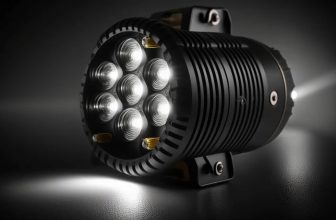
If you have an extension cord that’s not working, you can repair it yourself. If you are a novice at DIY repair, you can even attempt a repair on an extension cord using a terminal screw plug. If you’ve ever used an extension cord that was damaged, you may be wondering how to replace an extension cord plug. Here are some instructions:
Repairing an extension cord is the only repair you should ever make
You shouldn’t attempt to repair an extension cord yourself unless the plug has been seriously damaged. This is a violation of OSHA regulations. To repair a cord, you need to cut off the damaged area and install a new male or female end. Unfortunately, repairing a cord that has been damaged in this way may shorten its lifespan. The best way to avoid this problem is to buy a new cord altogether.
Before you attempt to repair an extension cord, you should know how to identify the damage. It is essential to avoid damaging it by removing the plug, pinching it, or bending it. Also, be careful when running an extension cord outdoors. Make sure it is protected from trampling or hitting. Finally, make sure the cord is the proper size for the area it is in. If you need to run it through a doorway or under a rug, use an extension cord protector to avoid accidentally ripping the jacket.
Types of electrical plugs
There are two basic types of extension cord plugs. One is rounded and one is two-pronged. To replace an extension cord with a two-pronged plug, you should remove the plug tip and the plug’s outer housing. Plugs are generally comprised of a plastic outer case and screw-down terminals. Some are disassembled at the store and require unscrewing screws or snapping cases to remove.
There are 15 different types of electrical plugs. The most common are Type A and Type B. The former are typically used in homes and other places, while the latter are typically used in industrial settings. Plugs are available with different voltages and different shapes, depending on your needs and location. The plugs for different voltages are made of two different materials. The most common ones are 110-120V flat blades and two-pronged, whereas plugs for 240V are round.
Wiring an extension cord plug
If your extension cord has a clamping device or knot, you’ll need a soldering iron to secure the wires. Remove the plug’s terminal screws and wrap the hot wire around the brass terminal. Tighten the screws until you can no longer see any wirehair. Repeat this process for the other end of the cord. Once done, your extension cord is ready to plug into an outlet. Here are some tips to make this process easy and safe.
To replace the extension cord plug, strip the outer casing using a utility knife. This will expose the three wires inside the cord. Remove the exposed parts with a wire cutter. Be sure to select a replacement plug with the same voltage and amperage ratings as your old plug. You may also need a wire cutter to remove the remaining damaged pieces. To avoid causing damage to the remaining wires, choose an extension cord plug with the same voltage and amperage ratings as the old one.
Wiring a terminal screw plug
If you’re looking for an easy way to replace an extension cord plug, you can make one yourself. Terminal screw plugs have three wires instead of two, and connect the two ends of the cord together. The black wire carries electricity, while the white wire is the neutral, looping around the silver screw. A green wire goes to the ground screw. This type of plug usually requires some simple tools. To make your plug, push the cord against the plug’s prongs. The prong blades will snap into the jacket of the plug. If the plug has screws, you can use a screwdriver to tighten the connector back in place.
To replace an extension cord plug, you first need to strip the insulation from both ends of the cord. After stripping off the insulation, you should then attach the exposed copper to the appropriate terminal screw. In most cases, the wire ends should connect to the green grounding screw, while white or black wires should attach to the brass or silver screw. Once you’ve attached the wires to the new plug, you should tighten the screws on both sides. Then, plug the extension cord back into its socket and test it.
Wiring a non-polarized self-connecting plug
To wire a non-polarized self-connectting extension cord plug, first take a stripper and strip the insulation off the wires. Then, thread the stripped copper wire onto the new screw and insert the plug into the hole. Be sure to use an underwriter’s knot to avoid straining the wires and to prevent the Y-shaped cord from breaking. If you’re not sure whether the new plug fits, you can use a wire clamp or a pair of electrical wire scissors.
A polarized plug has a wide prong and a narrow one. Its neutral line is usually silver or ribbing. The wire going to the narrower prong is plain and gold in color. Alternatively, you can purchase a polarized plug from Home Depot. This will ensure a solid connection. However, if you’re not sure, it’s easier to use a polarized plug from Home Depot or other outlets.




